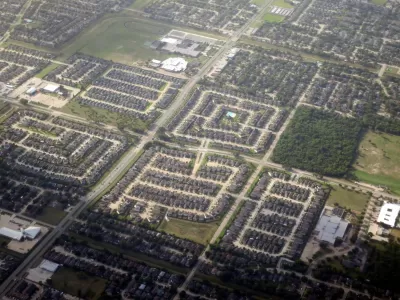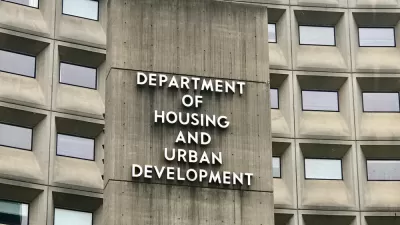Strengthening U.S. Department of Housing and Urban Development's civil rights enforcement could send a powerful signal to communities resistant to changing discriminatory housing rules.

A quick glance at current statistics shows the stark and continuing legacy of housing discrimination policies in American cities, writes Jerusalem Demsas for Vox. Studies show that "moving to a wealthier neighborhood not only increased the likelihood that kids would go to college, but also increased earnings by roughly 31 percent by the time they’d reached their mid-20s." Yet neighborhoods remain largely segregated, with many areas inaccessible to the average family.
Exclusionary policies like single-family zoning play a major role in keeping lower-income families from moving into suburbs and certain neighborhoods, and a recent reckoning with the discriminatory origins and harmful effects of these policies has led many cities to revise single-family zoning laws. In the Nashville suburb of Franklin, single-family zoning and a minimum lot size of (in some areas) two acres has kept the neighborhood overwhelmingly white and wealthy. Local officials recognize the problem, and have shifted their focus to approving more multi-family developments. According to the city, "in 2020 they approved only 4.9 percent of proposed single family home developments but 69 percent of proposed apartments." While some communities are already taking similar steps, others have expressed resistance to changing zoning codes in favor of more density.
Demsas provides a number of recommendations that can shift housing policy in more cities toward achieving the goals of the Fair Housing Act. If all else fails, Demsas writes, "sue the suburbs." The Biden administration should "open up the floodgates for civil rights organizations, developers, and its own Justice Department to begin suing the worst offenders of exclusionary zoning." The first step in this process is staffing up the Department of Housing and Urban Development's (HUD) Office of Fair Housing and Equal Opportunity, which is currently "lacking the kind of expertise that will be needed to in order to dig into civil rights enforcement and compliance," according to Sara Pratt, former deputy assistant secretary for fair housing enforcement and programs and senior adviser to the assistant secretary at HUD during the Obama administration.
While lawsuits are "a last resort," setting up the infrastructure for them can send a signal that the administration is serious about enforcement and could "deter other localities against exclusionary zoning practices and encourage them to work with HUD to develop a plan that fits their localities’ needs."
FULL STORY: America’s racist housing rules really can be fixed

Manufactured Crisis: Losing the Nation’s Largest Source of Unsubsidized Affordable Housing
Manufactured housing communities have long been an affordable housing option for millions of people living in the U.S., but that affordability is disappearing rapidly. How did we get here?

Americans May Be Stuck — But Why?
Americans are moving a lot less than they once did, and that is a problem. While Yoni Applebaum, in his highly-publicized article Stuck, gets the reasons badly wrong, it's still important to ask: why are we moving so much less than before?

Using Old Oil and Gas Wells for Green Energy Storage
Penn State researchers have found that repurposing abandoned oil and gas wells for geothermal-assisted compressed-air energy storage can boost efficiency, reduce environmental risks, and support clean energy and job transitions.

Updating LA’s Tree Rules Could Bring More Shade to Underserved Neighborhoods
A new USC study finds that relaxing Los Angeles’ outdated tree planting guidelines could significantly expand urban tree canopy and reduce shade disparities in lower-income neighborhoods, though infrastructure investments are also needed.

California's Canal Solar Projects Aim to Conserve Resources and Expand Clean Energy
California’s Project Nexus has begun generating electricity from solar panels installed over irrigation canals, with researchers and state agencies exploring statewide expansion to conserve water and boost clean energy production.

HHS Staff Cuts Gut Energy Assistance Program
The full staff of a federal program that distributes heating and cooling assistance for low-income families was laid off, jeopardizing the program’s operations.
Urban Design for Planners 1: Software Tools
This six-course series explores essential urban design concepts using open source software and equips planners with the tools they need to participate fully in the urban design process.
Planning for Universal Design
Learn the tools for implementing Universal Design in planning regulations.
Heyer Gruel & Associates PA
City of Moreno Valley
Institute for Housing and Urban Development Studies (IHS)
City of Grandview
Harvard GSD Executive Education
Salt Lake City
NYU Wagner Graduate School of Public Service
City of Cambridge, Maryland




























